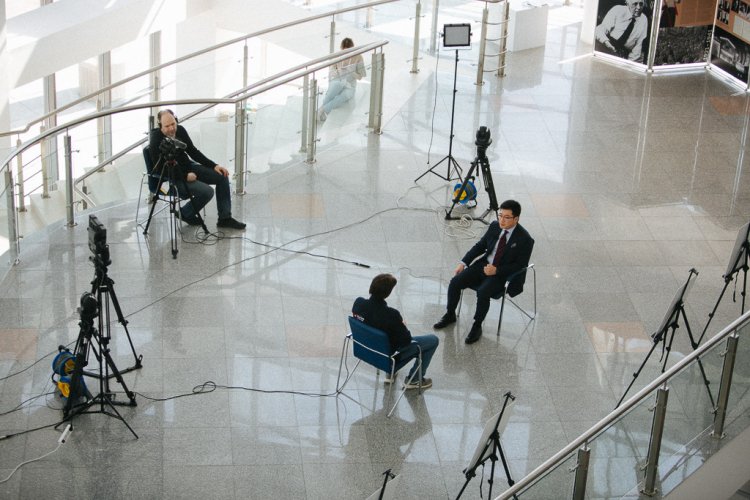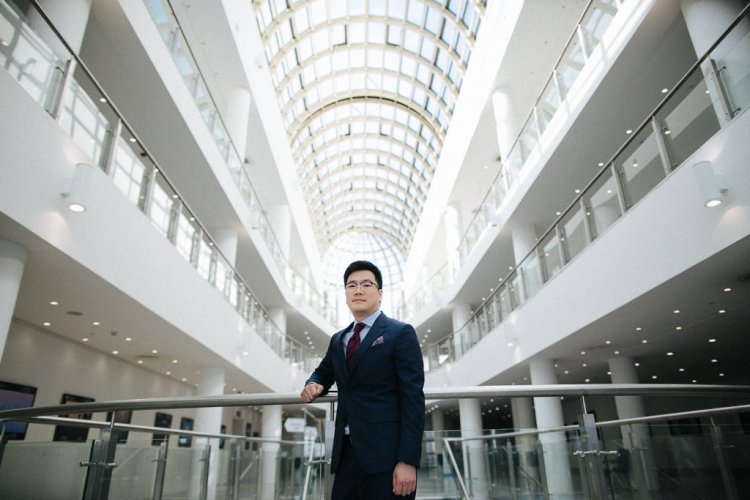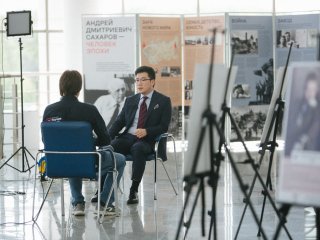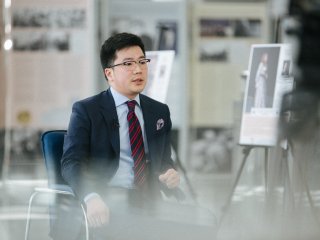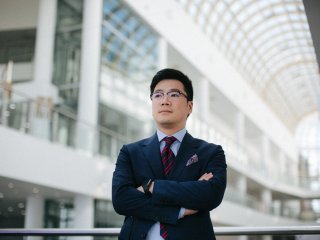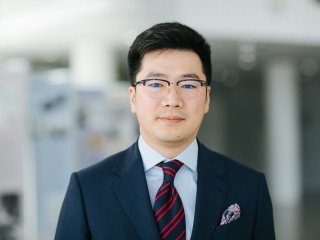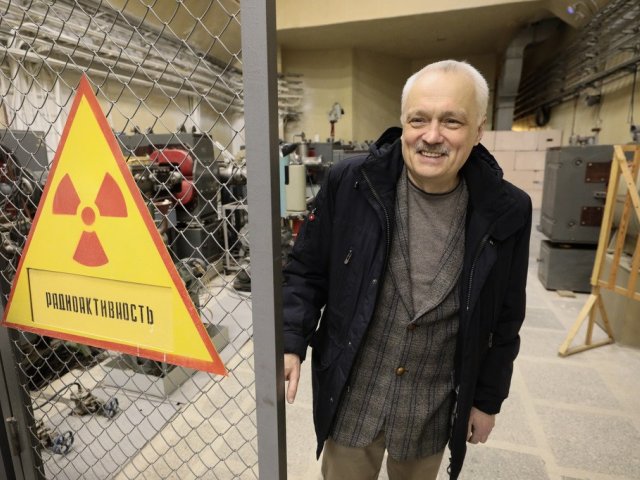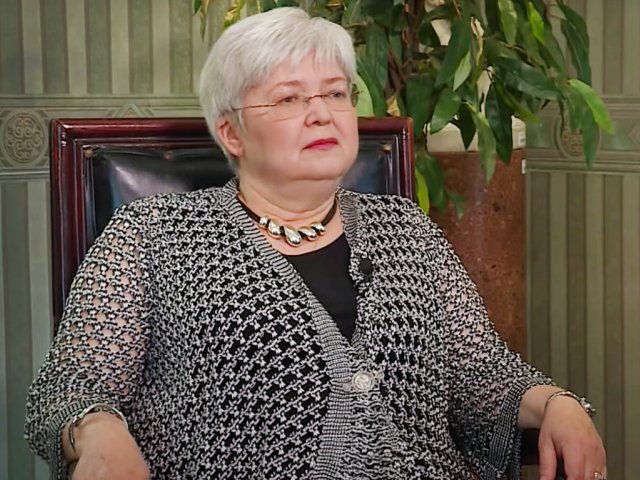The impact of pandemic on rendering oncological aid in Russia, whether oncological patients are fit for COVID-19 vaccination, scientific trends and applications enjoying priority in oncology – these topics will be discussed in the interview with Deputy Director General for Research at the National Medical Research Radiological Center (NMRRC) of the Russian Ministry of Healthcare Petr Shegay.
Petr V. Shegay
- COVID-19 pandemic has become a challenge for physicians of all specialties. What impact have the past 1.5 years had on oncological aid in Russia?
- I will begin with the round anniversary date. Last year, the Russian oncological service celebrated its 75th anniversary. It was founded in 1945. This very historical date has partially had a positive impact on the work of oncological service in conditions of COVID-19 pandemic. Multidisciplinary clinics including specialized oncological subdivisions, departments and services have become the weakness of our foreign colleagues. In Russia, on the contrary, a separate system of oncological dispensaries and large research oncological centers is functioning today. It was formed back in the time of Soviet Union. In conditions of pandemic, such structure has become a sort of fortress for oncological patients: almost no one of these medical institutions has been repurposed for combatting COVID-19.
The oncological service remained in full strength, so to say. The only thing was that we had to use the rules and guidelines of the Ministry of Healthcare devoted to complying with epidemiological measures, which allowed for building a barrier protecting oncological patients from viral infection.
– Can we say that the pandemic has introduced some new approaches to the work of oncological service or consolidated the existing methods? The matter in question is about telemedicine in particular…
- Thanks to the forward-thinking approach of Ministry of Healthcare, the first activities devoted to creating telemedicine in Russia started back in 2018-2019. Reference centers were founded and formed. They gained strength in the pandemic period and proved to be a tool capable of helping both patients and physicians.
Reference centers are well-equipped departments that can consult colleagues from the regions and allow for taking part in remote conferences held before working out the strategy of treatment. It means that the patient does not have to travel, say, from Khabarovsk to Moscow for learning the opinion of specialists working at national medical research centers. Telemedicine allows for sharing the results of computer tomography (CT) or magnetic resonance imaging (MRI). We use histological scanners: first, biopsy specimens are taken, and cover-glass preparations are prepared. Then, we scan them, and morphologists gain access to the images almost in real time, analyze them and provide their expert findings.
The preliminary measures that the Ministry of Healthcare has taken over the past years have laid a good foundation for development of telemedicine technologies. Thus, the system of reference centers has started working and given a good account of itself.
Today, Russia can boast of having 89 oncological dispensaries and 18 reference centers in molecular genetics, pathomorphology and X-ray diagnostics. These are independent expert units which have functioned all the time and rendered aid to regions.
Photo: Andrey Luft, Scientific Russia
– Are oncological patients fit for COVID-19 vaccination? What conditions should be complied with in case this vaccination is possible?
- So far, there are no randomized studies providing the evidence which shows that vaccination of oncological patients is absolutely safe and effective. However, we have gained a clear insight saying that there are no absolute contraindications for vaccinating the patients having oncological diagnosis in case history. Any vaccination, including the one of a healthy person, ought to be followed by careful monitoring. Our patients belong to the most vulnerable group of people, so any manipulations including vaccination are conducted under the surveillance of specialists. NMRRC plans to undertake a study of COVID-19 vaccine in a group of oncological patients jointly with the institutes of Gamalei and Chumakov.
– Are oncological patients vaccinated today?
- Yes, there is such practice. As a rule, these people are under regular supervision on the part of their oncological specialist. General guidelines say that the patient should get vaccinated not earlier than in three months after any kind of treatment – say, surgical operation or chemotherapy course. If the patient is in active phase of treatment and shows the signs of immunity weakening, their close relatives should be vaccinated in the first turn. It will form a sort of epidemiological barrier.
All possible conditions for vaccination of the patient’s close relatives are created in our country. At the same time, we will carry out studies and tests aimed at analyzing the efficiency and safety of vaccines.
– Following the results of 2020, the number of newly diagnosed oncological cases dropped by 80,000 ones if compared to 2019 – 556,036 cases against 640,391 ones. One of the reasons behind this reduction lies in the fact that the program of prophylactic medical examination was temporarily closed, while some medical centers were repurposed for combatting coronavirus. Shall we expect the explosive growth of advanced oncological cases?
- Over the past 10 years, the detectability of newly-diagnosed oncological diseases has increased by about 29%. It is a good figure: it means that we have taken the right way and can boast of modern diagnostic methods. Last year, the primary disease incidence diagnostics level dropped to the one of 2014. It is clear: certain epidemiological restrictions were introduced, some of the patients were afraid of complications related to the virus.
Today, we cannot make an accurate forecast as to the explosive growth in advanced cases. Over the past month, however, we have been coming back to normal life gradually thus taking measures for early disease diagnosis and trying to offset the small gap registered last year.
- Can you provide the statistical data as to diagnostics over the first months of 2021?
-We strike the statistical balance at the end of year. The exit from pandemic and activities aimed at early disease diagnosis did not start simultaneously, so it is better to assess the annual figures.
Photo: Andrey Luft, Scientific Russia
Photo: Andrey Luft, Scientific Russia
- There are a number of malignant tumors that feature increased mortality. These are pancreas cancer, lung cancer and throat cancer. What studies are carried out to reduce this mortality?
- The diseases that you quoted constitute a problem for the whole world. In his welcome speech addressed to the participants of 11th Congress of Oncologists, President of the Russian Academy of Sciences Aleksandr Sergeyev said: “Science and medicine are mutually complementary things. Each of the cannot exist without the other one.” Oncology is the area where science enjoys priority.
We ought to stay ahead of the time, take proactive instead of reactive measures. Now, we study tumor genesis and microevolution of tumor. Any tumor is viewed as an independent organism which tries to survive and resists to protective mechanisms existing in human organism. Here, genomic technologies come to our aid. Thanks to these technologies, we are able of deciphering the coding part of tumor genome, find its vulnerable areas and use the resulting information for clinical practice.
It is precision medicine. We can approximately predict the tumor microevolution in the specific patient, take advantage of its vulnerable areas and select a certain targeted drug that can make impact on these vulnerable points.
Immune therapy is actively developing. We de-cloak the tumor, as it is trying to disguise itself, hide, and escape from the natural protective mechanisms. New drugs and approaches are being developed. They allow for unveiling the tumor and raise the efficacy of treatment.
– Are these domestic technologies or the results of cooperation with foreign colleagues?
- This kind of research is carried out in a parallel track and is common for all countries of the world. It is a common problem and common goal that is to be achieved over the next few years.
– Recently, a surgical operation on hepatic radio-embolization has been performed in Obninsk. It is a new method of treating cancer, the more so for Russia. Can this kind of therapy be considered for not only hepatic cancer, but other tumors as well?
- Naturally, it is a promising technology. It offers the opportunity of treating patients who have been considered incurable before. Speaking about radio-embolization, one should recall endovascular methods of treatment first of all. We know endovascular treatment methods well from the experience of operations that cardiac surgeons perform. They selectively enter a certain incarcerated vessel, place a stent into it and restore the full blood flow to a certain organ. Our task is different: we should find vessels that nurse the tumor and feed a therapeutic agent to the tumor through them. Chemotherapy has been the most popular therapeutic agent until recently. Even now, it remains one of main endovascular treatment variants in case of elective embolization. It is good for reducing total toxicity, and we can raise the dose of the drug that I fed to the tumor. After having imbued the tumor with chemotherapeutic drug, we perform embolization, i.e., dam the blood flow to the tumor with the help of special emboli. They cause ischemia and finally kill the tumor, as embolus aggravates the effect of the drug that we have injected before.
Radio-embolization is a new method.
The appropriate radiation dose is calculated, and we deliver micro-emboli containing radioactive nuclide to the tumor. The radionuclide produces damaging effect intrinsically causing double-stranded DNA breakage which leads to the death of tumor cells.
This method looks extremely promising, yet the use of it is so far limited to the cases of hepatocellular carcinoma. The reason behind it lies in the fact that the producer has set certain a certain goals and objectives while making it. At present, our institute, its branch in Obninsk in particular has developed its own microspheres which are different in effectiveness. They carry a different radionuclide – rhenium. These microspheres have protein nature, which allow for expecting these emboli to dissolve later.
The creation of a new domestic medication – from development to implementation into clinical practice – makes it possible to expand the range of therapeutic indications. We can use this method for treating other pathologies and give ourselves free rein being able to expand the range of indications for radio-embolization.
- Do you need new drugs for it, or just to find a method to deliver them to other organs?
- We required certain experience for it. Both the delivery method and main therapeutic agent are clear for us. We should expand the range of indications and carry our clinical research. Having produced a drug or medical device, the manufacturer describes in the application instruction the cases it should be used for, for instance, as treatment of hepatic cancer patients. Those who intend to use the drug for treating other organs have to address the manufacturer with a request to enter additional permission into the product instruction.
When the drug developed and implemented in Russia finally appears, this work will be performed on a continuous basis. Starting from hepatic radio-embolization, we expect to carry out clinical studies, add radio-embolization of other tumors and develop this product further on.
– What time period can we talk about? How fast is the technology being adopted?
- We can talk about the next few years. According to the rules, any drug must undergo certain studies. I mean a series of preclinical studies and clinical trials which let us come to the conclusion that the drug is safe and effective. As the studies are going on already, we can expect to have the drug available in Russian clinics in the years to come.
Photo: Andrey Luft, Scientific Russia
– Chemotherapy, radiation therapy, drug treatment… Which of the methods looks the most promising one, if any?
- We cannot talk about monotherapy today. The most efficient approach is multidisciplinary one. The effective treatment cannot include surgery, chemotherapy or radiation therapy alone. The most effective and safest solutions for the patient lie at the nexus of various disciplines. I mean neo-adjuvant chemotherapy that is administered before surgery, radiation therapy which is added after a certain mass of tumor is removed. It is at the nexus of these disciplines that we can find the happy medium, the golden mean which will allow us to make the patient’s treatment a effective as possible.
Speaking about scientific trends in oncology, I would emphasize radionuclide therapy, the thing that they call nuclear medicine now, and theranostics. Nuclear medicine suggests collective, team work. Chemists-synthesizers radiochemists and oncologists are involved. This team work results in producing a product that allows for developing a precision approach to each patient.
As for theranostics, it lets us use radionuclide carriers for various purposes. A booster rocket, say, allowing for overcoming the force of gravity can bring into orbit both a satellite and some military spacecraft.
The same is true for theranostics. One and the same carrier can deliver to the focus area of illness with the same efficiency both the radionuclide that allows for fixing the disease and identifying its morbidity, and combative charge, i.e., the radio nuclide which kills the tumor.
– Over the past few years, news about a vaccine against different types of cancer would appear from time to time. In particular, I have seen the information about clinical trials of brain cancer vaccine. Can we expect to have cancer vaccine?
- The studies of this type have been carried out all over the world for a long time already. Best minds work on this problem in Russia and abroad. Such efforts just could not help bringing certain results. That is why there are hopes that the new technologies will result in producing an interesting treatment agent for clinical practice.
– What about other prophylactic methods? What should be done to prevent cancer formation?
- Chief non-staff oncologist of the Ministry of Healthcare Andrey Kaprin believes that the disposition toward cancer is innate for human organism only in 30% of cases, while lifestyle and social behavior account for the rest 70%.
First, we can help our organism ourselves by way of choosing healthy lifestyle and assuming active position with regard to medical care, i.e., undergoing preventive examination regularly. It will allow for reducing the said 70%. Besides, there are technologies for early diagnostics, election of therapy, and genome editing. They are actively implemented and looking for their own niche in oncological practice.
The main element of early diagnostic is self-discipline. There will be no universal method of early diagnostics until we persuade the patient to go through screening examination regularly, monitor the behavior of their organism, listen to it.
As a rule, the positive result of early diagnostics depends upon the patient’s consciousness, their active position with regard to preventive medical examination and undergoing the screening programs that the Ministry of Healthcare has developed for us.
- The oncological community suffers from a certain staff shortage. It amounts to 15% a far as oncology and radiology are concerned. Is it a large figure?
- When the program on combatting oncological diseases started being actively implemented in Russia, the number of jobs began to rise. This staff deficit started making itself felt with expansion of clinical care, foundation of centers for outpatient oncological care and increase in the number of jobs in oncology.
However, we should not forget about the programs of accreditation for attending physicians-oncologists and retraining of personnel launched in 2019. It means that a physician who deals with thoracic surgery acquires additional knowledge, get re-trained and becomes a skilled professional in oncological surgery. Taking advantage of the knowledge that he/she has had and the new one he/she has obtained, the person becomes a skilled oncologist specializing in thoracic surgery.
The gap that has taken shape due to modernization and introduction of new approach will be closed up shortly at the expense of joint efforts which the Ministry of Healthcare and the Ministry of Education take today.
– So, you mean that oncology is the branch of medicine that I not reducing, but, on the contrary, expanding, don’t you?
- It becomes more efficient. Any approach should depend upon the medical aid being available. We cannot declare having good oncological service meaning large national medical research centers alone, though they play a key role in the process of training staff. A certain employee pool including both young and retrained specialists is annually formed at NMRRC.
– Can different Russian regions boast of the same level of development in the field of oncology, or some of them help the other ones?
- As chief non-staff oncologist of the Ministry of Healthcare Andrey Kaprin says, the country needs a region-specific approach. He means that the approach ought to be chosen with the region’s strengths and weaknesses taken into account. That I what has been done. The oncological service passports have been drawn up for each region. They allow for identifying the requirements for each region and rendering aid to them in performing functions.
The regions having more accessible infrastructure help their neighbors. Certain logistics of patients takes place between the regions and centers. For instance, if it I impossible to render adequate medical care to a patient with complicated brain tumor, he/she gets consultation at NMRRC, obtains the required medical advice and may be sent to a different region for receiving highly specific medical care. In such a case, he/she does not lose time.
– What was the impact of the Year of Science and Technologies on developments in the field of oncology?
- The process of developing technologies in the field of oncology has never stopped. The research was carried out at the patient’s bed. Securing a medical order and understanding the needs of oncologists, the scientists always go hand in hand with us. They develop technologies that allow for curing the patient.
Thanks to the serious attention to oncology paid by the state, we see how interesting the research I, and how quickly we get the result.
Speaking about the technologies of recent years, I can say that the branch of NMRRC in Obnisk will soon have the world’s first complex of neutron therapy of intra-hospital deployment. Neutron therapy allows for overwhelming the protection properties of tumor, the so-called tumor resistance. We expect that the use of neutron therapy as a booster for subsequent proton beam therapy will help us to improve the results of treatment. This project is implemented jointly with Rosatom State Corporation.
Besides, medications for nuclear medicine and theranostics are being developed, and clinical trials of radiopharmaceuticals that allow for performing radio-embolization go on. This kind of research I carried out near the patient’s bed, as the technologies developed separately from the patient fail to take into account all details and nuances.
The interview was conducted with support of the Russian Ministry of Science and Higher Education and Russian Academy of Sciences.

